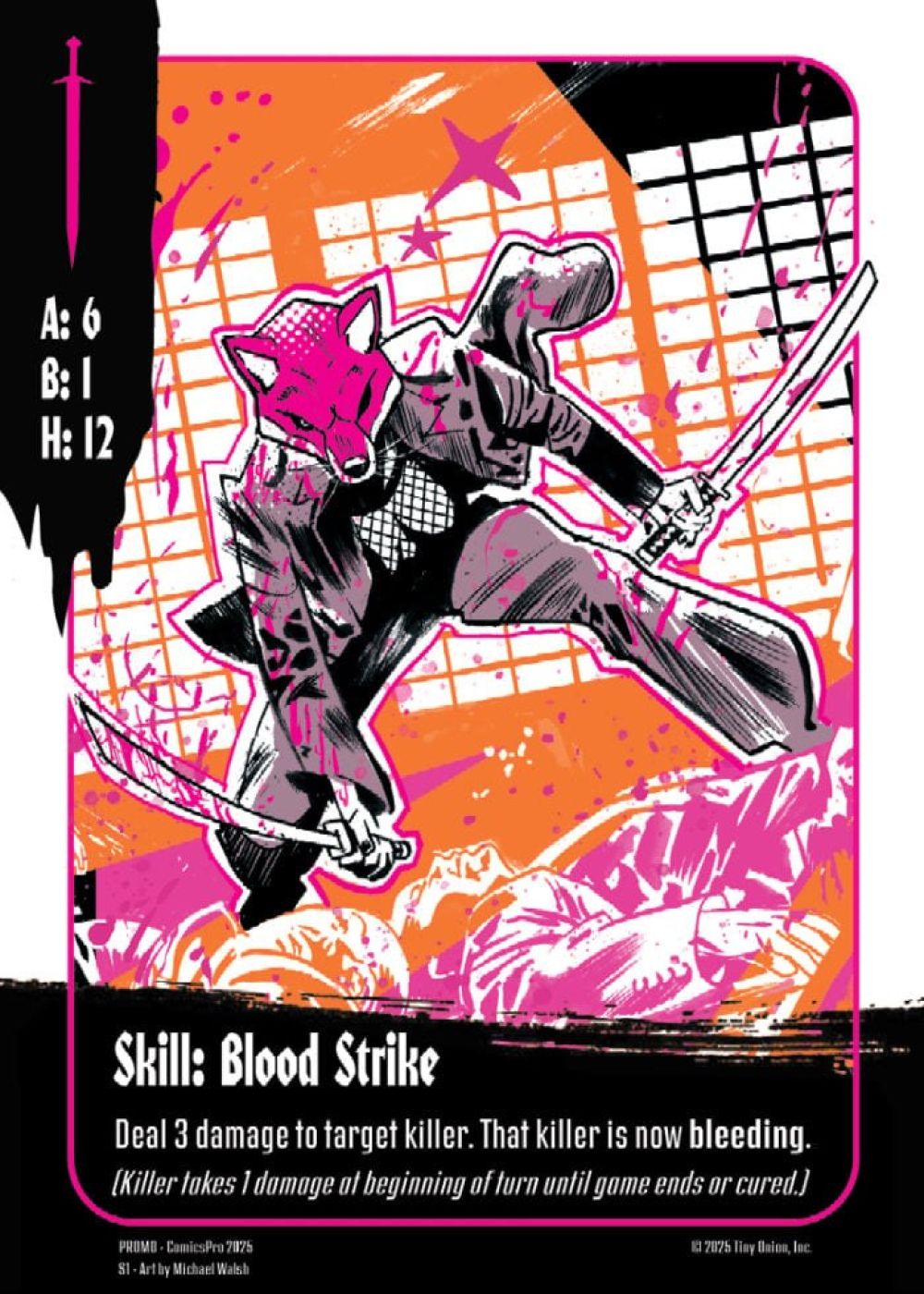(SUBSCRIBE TO KIERON'S NEWSLETTER BY CLICKING HERE)
Is it possible to have too many high concepts? I would say on the evidence of Exquisite Corpse, you would say no. The monstrous families who secretly control america drop 12 weapon-themed killers into a (deliberately) small town and whoever wins, controls America for five years (and probably kill other people too.) Battle Royale meets the purge meets... well, if you make a list of the elements and influences it sounds like the world's most exciting (and brutal) shopping list. But it's also a high concept in its production - you and Michael, and a team of people, working in a writer room fashion, in a way distinctly unlike Indie comics are usually done. The multi-level pun title, of having rotating creative, in the manner of an Exquisite Corpse in a story about making corpses, exquisitely? The fact it's 12 issues, when 12 is so key to the book? It's a lot, and deliberately a lot. Some say less is more. I think this is a more is more kind of book. Am I off the mark?
I think you're hitting it right on the head. This is loud book. It's loud in its construction. It's loud in its imagery. It's loud in its design. In its marketing. The creative question from go was how can you take a fun high concept like this and get the comics market to treat it like a superhero event comic from the release of issue one, and do that without the bag of tricks you have in licensed comics or at the big two. We can't drop a Transformer or a Ninja Turtle or Doctor Manhattan in here, but there is a kind of blockbuster storytelling we're trying to tap into here. It wears its King influences on its sleeves, but I was also trying to tap into a Spielbergian scale from go. We want people swept up in this, and asking questions about the universe. We're starting with a sixty page issue that we're selling for the price of a book one third that size, and the goal is by the end of that issue we want people excited to pick up the next one and the next and the next. There's been a lot of conversation in media spaces about this being the attention economy, and there are ways you can make people pay attention. We wanted people to pay attention. It's definitely not a shy book. The energy expresses the spirit of the thing, and the scale.

Previously you've talked about how comics (and especially indie comics) don't go big enough with the looks of their characters. Popular Manga, even the grounded ones, have these big bold iconic looks. I can see that thinking in play here You can imagine all 12 of the weirdos being the big deal or lead character, but you know that (just from the concept of the book) some are going down, quickly.
For me it all goes back to Erica Slaughter. There is a lot that we could have accomplished with Something Is Killing the Children without her iconic mask, but that image cemented the book for me and for readers and it changed me as a writer. We're operating in a visual medium, and it's important to lean into that. And even knowing that some characters would die very quickly, we knew that each of them needed to have enough of a visual hook for people to feel like they COULD live longer. There's also a card game component to what we're building here, and we want people to want to use the cards of the killers who don't make it far through the comic. Each had to stand alone, but look exciting and dynamic all together. Walsh and I spent a long time thinking about the sort of aesthetics that you can see in games like Fortnite, in superhero comics, in slasher movies. We wanted to lean in without trying to make any of the characters just a nostalgic throwback. We kept leaning in to the killers whose core concepts were the most visually exciting, and we felt would lead to the best story. It was an exceptionally fun process.

The production method - the team of people, working on the book. You've referenced what you missed from WFH comics, and trying to bring it over. How does that work? How much freedom do folks have? How much is the master plan? How were folks brought aboard?
Before the rest of the team were brought in, I had written the bible for the world and its characters. And Walsh had designed every killer, and every civilian. There were only a couple of dynamics that Walsh and I laid down that we hoped people pick up -- an affinity between two of the killers, and a rivalry between another two -- but everything other than that we left to the room. We laid out how the story started, and the rules of how we would tell that story. Those pieces were locked. There was only one line of dialogue in the first issue that changed in a fundamental way after our creative summit. But from that point, the rules laid down, we let all of these phenomenal creators play with this world, and suggest what might happen next, and who might die in what order. We set the rules of the game, and the team had the freedom to play within those rules, and then we tightened the whole story as a unit. It was honestly one of my favorite collaborative experiences of my life.

I've talked a lot of the sturm und drang here, but the normal side needs to be stressed. It's not just the flamboyant killers. It's also their handlers, from the family, sipping drinks while the blood spills. But more so, it's also the people in the small town. Yes, it's a triple sized debut issue, but to delineate all these people so we care about them and their survival (or root for their death) is a lot. Care to talk about the structuring and planning for that?
It was one of the rules in the room. For this story to work, it had to be from the perspective of the ordinary people caught in the crossfire. Otherwise this would just be a callous action comic book. We need to feel the horror of what it would be like to be caught in the crossfire of this brutal, inhuman game designed by people who could not care less about the ordinary humans on the ground. Horror doesn't function as horror if the Slasher is the protagonist. Here we have a civilian ensemble who are alltrying desperately to stay alive, and to understand what is happening to their small town. That was always crucial to me. The killers are the noise, and the spectacle, but the human characters are what make this a compelling story issue to issue. I honestly can't imagine doing it another way.

Neil Tennent from the Pet Shop Boys coined the phrase Imperial Phase to describe a certain point in a creator's career. It's not just being enormously successful - it's also being successful in a way which means people will take a leap of faith with you, and you get to push the boundaries of the field you're in. Do you recognise that in yourself right now? Because this feels like an Imperial Phase project.
Look, I hope so. I hope people take the leap of faith, on Exquisite Corpses. There's a lot more stuff I want to see if I can get away with.
Exquisite Corpses is available to pre-order now from Image Comics.
(SUBSCRIBE TO KIERON'S NEWSLETTER BY CLICKING HERE)
